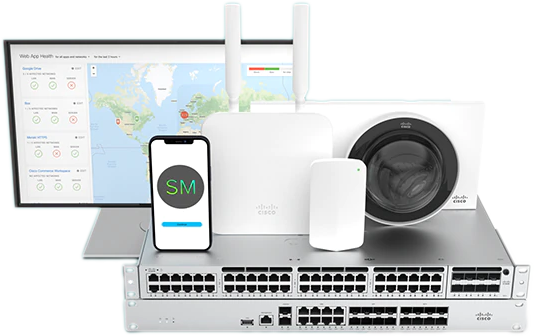 As concerned authorities battle to put a stop to the current unprecedented pandemic, Corona Virus, companies are moving to a remote workforce, allowing employees to work from home to reduce the spread of the virus. Top tech companies, including Microsoft, Facebook, and Amazon, for instance, have already asked their workforce to work from home. If they haven't already, employers should prepare their workforce to work remotely. Below are some tips to enable your workforce to work from home during a pandemic.
As concerned authorities battle to put a stop to the current unprecedented pandemic, Corona Virus, companies are moving to a remote workforce, allowing employees to work from home to reduce the spread of the virus. Top tech companies, including Microsoft, Facebook, and Amazon, for instance, have already asked their workforce to work from home. If they haven't already, employers should prepare their workforce to work remotely. Below are some tips to enable your workforce to work from home during a pandemic.
1. Develop Safe Foundation for Remote Digital Access
Companies should provide secure access to IT systems within the business and internet to its employees. This could be through an internet provider and the use of a virtual private network. The IT department should pay attention to every connected tech stack, ranging from internet access to a secure means of interacting with corporate networks, communication channels, and applications.
- Internet Access
Employers shouldn’t assume their workers have adequate and safe internet access at home or work studios. Conducting a quick survey from the workforce will help you identify such gaps. For some, consider investing in mobile hotspots and data plans.
- Remote Working Devices
 Organizations should as well look into remote work devices of their workforce. Having your employees use their own devices is cheaper and faster to deploy but presents a huge security risk to the company. As such, companies should assess their worker’s existing computer devices to gauge their effectiveness.
Organizations should as well look into remote work devices of their workforce. Having your employees use their own devices is cheaper and faster to deploy but presents a huge security risk to the company. As such, companies should assess their worker’s existing computer devices to gauge their effectiveness.
That aside, employees will require additional accessories to improve their working experience. Webcams for web conferencing, an on-air sign, and high-quality headset, for instance, are essential accessories that ensure smooth working and better employee productivity.
- Secure Access to Business Assets
A virtual private network provider typically assures safe remote access to online services. The solution forms an encrypted network connection from the remove devices, making it safe for workers to access online business assets. Since various VPNs are available, you should consider the usability and reliability of the solution. For companies opting to work remotely from the cloud, they can leverage cloud platforms such as Cisco Umbrella for secure, reliable, and fast internet experience.
2. Provide Access to Business Applications, Communication and Collaboration Tools
The current business culture revolves around teamwork and shared knowledge, including files, reports, documents, and more. As such, ensuring that even your remote employees collaborate is pertinent to a successful remote working strategy. Most organizations prefer cloud solutions because installing native applications on various remote working devices can be difficult.

Additionally, with the inherently isolating nature of remote work, employees should leverage digital communication and collaboration tools such as WebEx Meetings and Callings, VoIP Phone Services such as 8x8, Slack, email, phone, and Web conferencing tools like Zoom. These tools come in handy in communication and collaboration between employees and clients as well. Remote work can be challenging for those who are not used to it. Therefore, companies should put in extra effort to make it easier and engaging.
Probably the cutting edge of digital collaboration is Telepresence tools such as Cisco Webex. Whereas they are expensive, they help workers retain the feel and benefits of a physical office presence. Telepresence tools allow remote workers to take turns “dropping into the office” virtually so that they can meet colleagues who are still there.
3. Develop Employee Remote Working Skills
It is fundamentally different to work from home or work studios for most employees. The absence of hallway chatter, serendipitous experiences, and companionship that comes with working together in a physical office makes remote work challenging. Since everyone is less visible, it takes a toll on effective collaboration, even with the various digital tools at hand.
As such, organizations should impart key skills that remote workers can leverage to succeed in the digital space. Some basic skills include;
- Working out loud – in this method, the employees narrate their work to digital tools. This helps workers keep in touch, align, and collaborate with ease. It returns some of the beneficial aspects of a physical workspace through conversational activity.
- Work coordination – the majority of work coordination tools are generic and not adapted to ensure that the due business process is coordinated throughout the team. However, with the help of dedicated software tools, the workforce ensures that marketing, operations, and sales are tracked, analyzed, and optimized to effective completion.
Apart from imparting skills, organizations should as well cultivate a remote working mindset and culture among its workforce. Companies should provide a free space for open participation and inclusion, which makes employees ready for remote working.
As Coronavirus and any other pandemic makes people far more isolated, organizations have an opportunity to create a compelling digital remote working environment that is engaging, participatory, and full of human connection. Companies should make use of innovative modern tools, establish new skills, shift to the digital culture, and prepare for whatever comes beyond the current Coronavirus.










